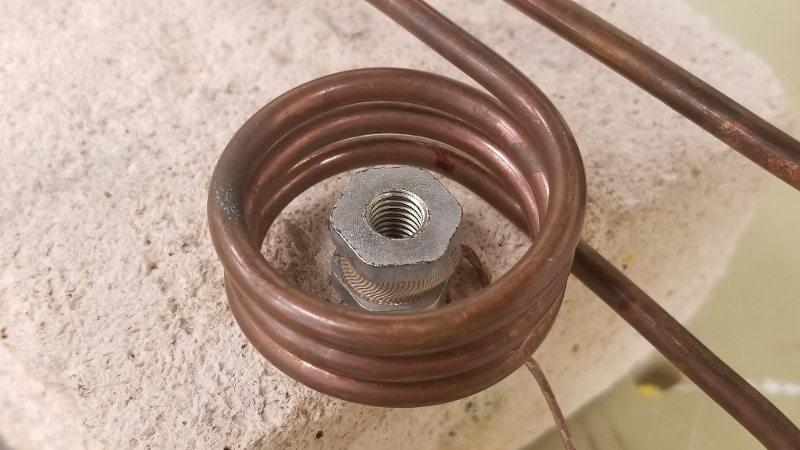Induction Brazing an Aluminum Assembly
Objective A company wanted to assess using induction heating for their aluminum assembly brazing process, and contacted THE LAB at Ambrell to utilize...
Applications
Applications: More
Applications: More

Industries:
Industries: More
Industries: More
Industries: More

Products:
Products: More
Services:
Services: More

Learn:
Learn: More
About:

1 min read
Brett Daly
5/25/18 3:39 PM

A supplier to an engine manufacturer needed to heat magnetic steel inserts for a metal-to-plastic insertion (also known as heat staking or indirect induction heating) application. The parts needed to heat to 500 °F (260 °C) within five seconds prior to being placed into an injection mold. Due to it taking the robot a few seconds to place the parts in the mold, it was also important that it maintain the temperature for a few seconds after heating concluded.
The client turned to THE LAB at Ambrell to recommend the right solution for their application. THE LAB determined that an Ambrell EKOHEAT® 15 kW, 50-150 kHz induction heating system would be optimal for this application. They also developed a multi-position, multi-turn helical coil for the application.
During testing a thermocouple was used to measure the temperature of the part during and after heating. The power was turned on for five seconds and the part was monitored during heating and for 15 seconds after. After being heated to temperature the insert did not cool down below 300°F (149 °C) in that time period. The temperature actually increased due to the upper and lower sides of the insert getting hotter during heating and conducting the heat towards the center after the induction was turned off.
This was a new application for the customer, and they turned to induction due to their past success with induction along with its rapid heating and the ease of integration into the manufacturing process. Visit our application page for additional metal-to-plastic insertion application notes.

Objective A company wanted to assess using induction heating for their aluminum assembly brazing process, and contacted THE LAB at Ambrell to utilize...

Induction heating is a process that uses electromagnetic fields to heat electrically conductive materials. It has been used in numerous industries...

Induction heating, a process that uses electromagnetic induction to heat electrically conductive materials, is often thought of for large industrial...